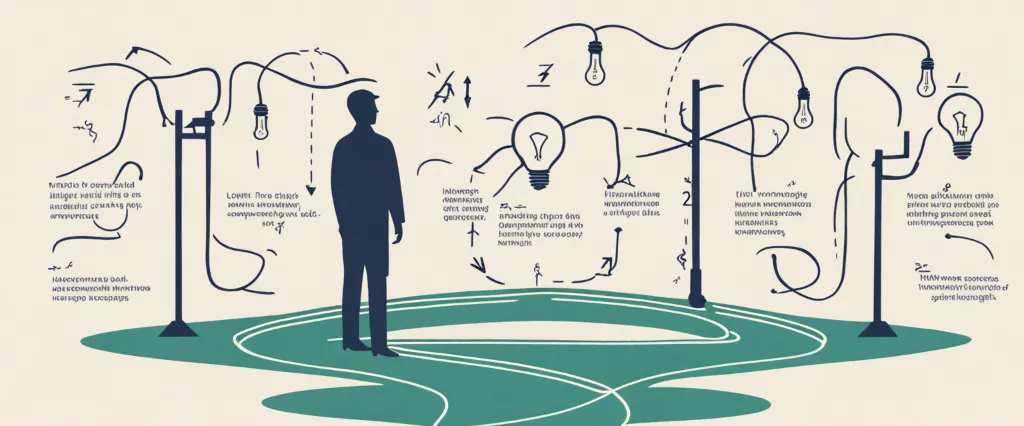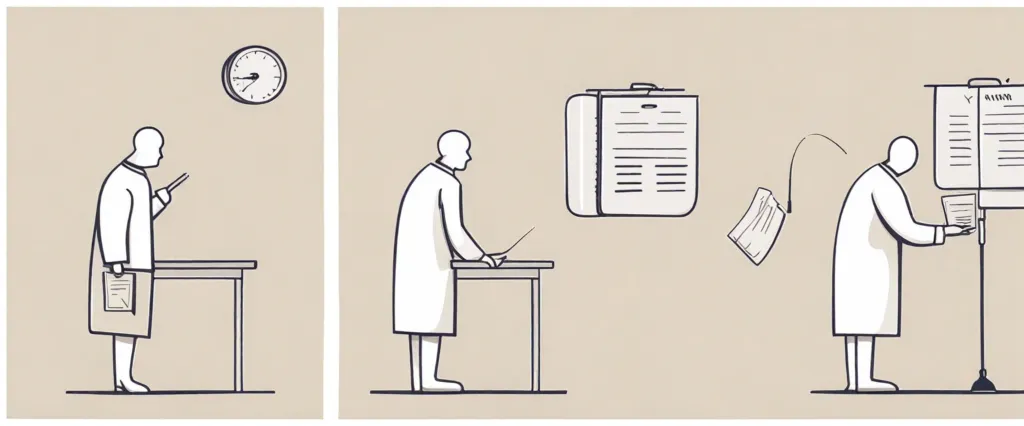In “Turning Pro” by Steven Pressfield, the author offers a profound insight into what it means to transition from an amateur to a professional mindset. Pressfield, a highly acclaimed author known for his book “The War of Art,” delves into the challenges, fears, and self-imposed limitations that prevent individuals from fully committing to their true calling. Through a culmination of personal anecdotes, historical references, and a no-nonsense approach, Pressfield implores readers to leave behind a life of mediocrity and embrace the disciplined path of becoming a true professional in their chosen field.
Chapter 1: Embracing the Professional Mindset
Pressfield suggests that embracing the professional mindset is crucial for individuals aspiring to reach their full potential in their chosen field.
Pressfield begins by pointing out that the amateur is driven by fear and seeks instant gratification, often resorting to distractions and addictions. The professional, however, recognizes the importance of discipline, commitment, and overcoming resistance. The professional mindset requires a shift in perspective, a commitment to continual growth, and a dedication to mastering the craft.
Central to the professional mindset is the idea of taking responsibility and understanding that the work itself is its own reward. Pressfield emphasizes the importance of perseverance and accepting that failure is a part of the process. Professionals understand that success is earned through unwavering commitment, consistency, and an unwavering belief in their abilities.
The chapter also highlights the need for professionals to embrace solitude and silence. Pressfield discusses the power of self-reflection and the importance of disconnecting from the noise and distractions of daily life. Solitude helps professionals find their authentic voice, focus on their work, and tap into their creativity.
In conclusion, It highlights the importance of discipline, commitment, perseverance, taking responsibility, and embracing solitude. The chapter seeks to inspire individuals to embrace the professional mindset and overcome the obstacles that prevent them from reaching their true potential.
Chapter 2: Overcoming Resistance and Self-Sabotage
Pressfield emphasizes the idea that resistance, which manifests as fear, self-doubt, and distractions, is the main force that prevents people from fully committing to their craft.
Pressfield describes resistance as an internal force that arises whenever we set out to pursue meaningful work. It is insidious and comes in many forms, ranging from procrastination to creating excuses or even seeking distractions. He highlights that resistance is most intense when we embark on what he calls the “hero’s journey,” which involves pushing ourselves outside our comfort zones and facing uncertainty.
Furthermore, self-sabotage is another critical issue that arises as a defense mechanism against potential failure or success. Pressfield explains that self-sabotage can manifest as self-destructive behaviors, such as substance abuse, fear of success, or even a fear of shining too brightly and attracting attention.
To overcome resistance and self-sabotage, Pressfield emphasizes the need for professionalism. He believes that behaving like a professional, regardless of one’s occupation or skill level, means showing up every day, committing wholeheartedly to one’s craft, and taking it seriously, even in the face of fear or discomfort.
Pressfield encourages readers to identify their own patterns of resistance and self-sabotage, understand their underlying fears, and develop strategies to counteract them. This involves recognizing that resistance and self-sabotage are inevitable parts of the creative process, but embracing a professional mindset and committing to overcoming them.
Chapter 3: Committing to the Creative Process
Pressfield emphasizes that becoming a professional means shifting our mindset, attitudes, and behaviors to overcome resistance and embrace the path of creativity.
The chapter begins by highlighting that resistance is strongest at the threshold of any creative endeavor. It’s at this point where most people quit, succumb to doubt, and abandon their creative aspirations. However, professionals acknowledge and accept this resistance, recognizing it as a sign that they are on the right track. They understand that resistance is not only external but also internal, originating from their own fears, doubts, and self-sabotaging beliefs.
Pressfield emphasizes the importance of being ruthless with our distractions and commitments. He suggests giving up comfort-seeking behaviors and disengaging from activities that drain our energy and sabotage our creative potential, such as watching excessive TV or engaging in addictive behaviors. True dedication means committing wholeheartedly to the work and making creative pursuits our priority.
Furthermore, Pressfield argues that professionals view obstacles as opportunities for growth. They keep pushing forward and face challenges head-on, rather than succumbing to their fears. He calls on creatives to embrace the journey, focusing on the process itself rather than solely fixating on the desired outcomes or external validation.
The chapter concludes by emphasizing the importance of persistence and discipline in becoming a professional. Pressfield encourages readers to commit completely to their creative endeavors, cultivating a mindset that embraces the challenges and virtues of the creative journey.
In summary, It emphasizes the importance of perseverance, discipline, and a shift in attitudes and behaviors to fully commit to the creative path.
Chapter 4: Honing Your Craft and Skills

The chapter begins with the idea that amateurs dabble in their chosen fields, while professionals are fully devoted and dedicate the necessary time and effort to master their craft. Pressfield asserts that amateurs may possess talent or ambition, but they lack the discipline and consistency required to excel. On the other hand, professionals push through resistance and overcome challenges to achieve their goals.
Pressfield explains that honing one’s craft involves a shift in mindset, where the focus is no longer on external rewards but on the internal satisfaction of personal growth and the deepening of skills. He encourages readers to cultivate patience, persistence, and a willingness to learn from failures as they navigate their journey towards becoming a professional.
The chapter also emphasizes the importance of discipline and routine. Pressfield highlights the significance of showing up every day to do the work, regardless of motivation or inspiration. He suggests creating a schedule and sticking to it, creating a sacred space where distractions are minimized, and consistently putting in the necessary hours of practice.
Pressfield concludes the chapter by emphasizing the value of learning from others who have achieved success in the chosen field. He advises seeking out mentors, studying the work of masters, and constantly seeking to expand one’s knowledge and skills.
Pressfield’s message is one of discipline, consistency, and dedication, urging readers to push through resistance, embrace failure as a learning opportunity, and continually strive for personal growth and improvement.
Chapter 5: Cultivating Discipline and Consistency
Pressfield emphasizes that discipline and consistency are the hallmarks of a professional, separating them from amateurs who are easily distracted or lack commitment. He asserts that the professional shows up every day and does the work, regardless of their mood or external circumstances.
One key aspect of cultivating discipline is establishing a daily routine. Pressfield suggests creating fixed hours for work and showing up consistently, even when motivation is low. This routine helps to foster a professional mindset and eliminates the need for willpower, as the professional no longer questions whether to work or not.
Furthermore, Pressfield highlights the importance of overcoming resistance, which is the force that opposes us when we strive for personal growth. He asserts that resistance is strongest right before a breakthrough, so recognizing and pushing through this resistance is critical.
The chapter also discusses the significance of training and education. Pressfield states that the professional never stops learning and seeks out mentors and sources of knowledge to continually refine their craft. Whether it is through reading, taking courses, or seeking guidance, the professional remains dedicated to lifelong learning.
Chapter 6: Embracing Failure and Learning from Setbacks
Pressfield emphasizes that failure is an inevitable part of any worthwhile endeavor and should be viewed as a stepping stone towards growth and improvement.
Pressfield first highlights the importance of understanding our fear of failure, which often stems from our desire to maintain the status quo and avoid the discomfort of change. However, he argues that true professionals embrace failure as an opportunity to learn, adapt, and evolve. They recognize that failure is not a reflection of ability but rather a necessary part of the process.
The author also introduces the idea of the Beginner’s Mind, a mindset that allows professionals to approach their work with a sense of humility and openness. By letting go of ego and the need for perfection, individuals can see setbacks as chances for growth and improvement. Pressfield advocates for developing resilience and persistence, using failures as springboards to propel oneself forward rather than giving in to discouragement.
Furthermore, Pressfield emphasizes the importance of self-reflection and learning from mistakes. He urges professionals to review their failures objectively, identifying weaknesses and areas for improvement. Through this process, they can refine their skills, strategies, and mindset, ultimately becoming more resilient and better equipped to handle future challenges.
In summary, Pressfield highlights the significance of overcoming the fear of failure and adopting a Beginner’s Mind mindset. He stresses the importance of resilience, self-reflection, and learning from setbacks to continually improve and grow as professionals.
Chapter 7: Navigating the Challenges of Success
Pressfield begins by explaining that success often comes with unexpected challenges and pressures. The external world views successful individuals differently, which can lead to a loss of identity and a sense of isolation. The author emphasizes the importance of staying true to oneself and staying grounded in the face of success.
Pressfield also highlights the danger of falling into the trap of self-importance and ego. As success grows, so does the temptation to indulge in complacency and lose the hunger and drive that led to success in the first place. To counteract this, he advises embracing an attitude of humility and continually pushing oneself to grow and improve.
Furthermore, Pressfield elucidates the importance of maintaining discipline and consistency even after achieving success. He encourages readers to establish a daily routine and stay committed to their craft, regardless of distractions or external circumstances. By maintaining this discipline, individuals can sustain their success and continue to grow.
Lastly, the author emphasizes the value of surrounding oneself with true professionals who can provide support and guidance. These mentors can help navigate the challenges of success and provide guidance when faced with difficult decisions.
By embracing these principles, individuals can overcome the obstacles of success and continue to grow both personally and professionally.

Chapter 8: Living a Life of Purpose and Mastery
Pressfield begins by emphasizing that to live a life of purpose, one needs to discover and pursue their true calling. He advises against settling for a life of mediocrity and conformity, urging readers to instead take a leap of faith and commit to their passion wholeheartedly. By doing so, individuals can find fulfillment and meaning in their work, as well as live a life true to themselves.
Furthermore, the author emphasizes the significance of achieving mastery in one’s chosen field. He argues that becoming a master requires intense dedication, practice, and perseverance. Pressfield urges readers to push beyond the initial phase of mediocrity and embrace the struggles and failures that come on the path to mastery. He believes that by embracing challenges and setbacks, individuals can grow, learn, and ultimately achieve greatness.
Pressfield also highlights that to live a life of purpose and mastery, one must overcome their own internal resistance. He advises readers to silence the inner critic, ignore self-doubt, and be willing to take risks. It is by facing and defeating these internal barriers that individuals can truly unlock their potential and live their best lives.
Pressfield encourages readers to avoid settling for mediocrity and instead commit to their passion, facing challenges and setbacks with resilience and determination. By doing so, individuals can live a life of purpose, fulfillment, and personal growth.
After Reading
In conclusion, Turning Pro by Steven Pressfield serves as a powerful guide for anyone seeking to overcome their inner resistance and fully commit to their creative endeavors and personal growth. Pressfield emphasizes the need to transform from an amateur mindset to a professional one, illustrating the qualities and habits required to make this shift. By highlighting the importance of discipline, facing fear, and cultivating a deep sense of purpose, Turning Pro offers readers invaluable insights and practical strategies to help them navigate the challenges and obstacles on their path towards professional mastery. Overall, this book serves as a motivational call-to-action, reminding individuals to embrace their true potential and choose the path of self-discovery and professional commitment.
1. Atomic Habits” by James Clear – This book delves into the power of small habits and teaches you how to effectively build and break them to transform your life. Clear provides practical strategies, backed by scientific research, to help you achieve your goals and make lasting changes.
2. The 5 AM Club” by Robin Sharma – In this inspirational book, Sharma advocates for waking up early and leveraging the first hours of the day to achieve peak productivity, maximize personal growth, and find inner peace. The author presents a compelling morning routine that will ignite your goals and set you on a path to success.
3. Mindset: The New Psychology of Success” by Carol S. Dweck – Dweck explores the concept of a growth mindset versus a fixed mindset, illustrating how our beliefs about our abilities profoundly impact our success. By cultivating a growth mindset, you can unlock your true potential and overcome obstacles with resilience.
4. Deep Work: Rules for Focused Success in a Distracted World” by Cal Newport – As a follow-up to “So Good They Can’t Ignore You,” Newport delves deeper into the importance of focused, uninterrupted work. He provides practical tips and strategies to enhance your ability to concentrate, eliminate distractions, and achieve higher levels of productivity.
5. The Power of Now” by Eckhart Tolle – In this transformative book, Tolle explores the concept of mindfulness and being present in the moment. By understanding the power of living in the present and detaching from past regrets and future anxieties, you can find inner peace and a heightened sense of fulfillment.
These five books, along with “Unlimited Power” by Anthony Robbins and “Designing Your Life” by Bill Burnett, provide a well-rounded library of self-development resources. They cover aspects ranging from personal growth and mindset shifts to productivity and finding inner peace. Each book has the potential to profoundly impact your life and help you unlock your full potential.




